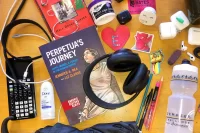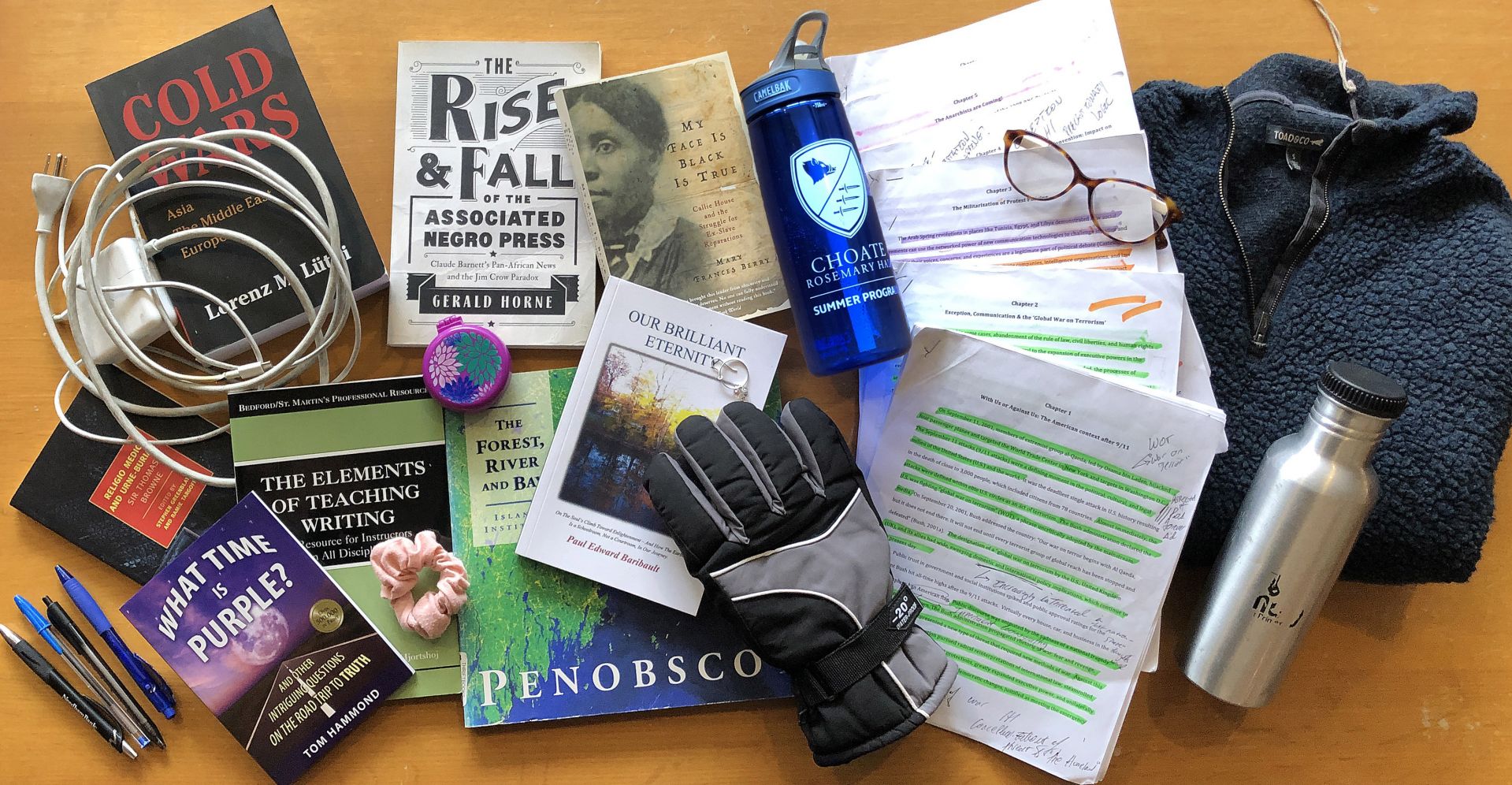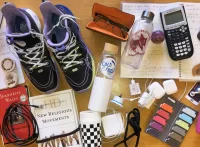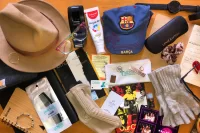
So much has changed during the pandemic. What hasn’t: Students still lose things in the library. (Or maybe they just leave them there, like printouts of thesis chapters.)
Stopping by the Ladd Library Lost and Found on Dec. 17, we saw and identified these items.

- Quarter zip hoodie by Toad&Co, self-described creator of “socially and environmentally committed garments that are equally suited for the rigors of the trail or the tavern.”
- Book: Cold Wars: Asia, the Middle East, Europe (2020), by Lorenz M Lüthi, described by the Guardian as “the latest major work to suggest that our understanding and collective memories of the conflict should be reassessed. With 700-odd pages of dense, dry text, it is a heavyweight contribution.”
- Four pens, including a classic Bic Crystal style, which was included in the Museum of Modern Art’s Humble Masterpieces exhibition in 2004. Plus, a pen from Needham (Mass.) Bank.
- Book: The Rise and Fall of the Associated Negro Press: Claude Barnett’s Pan-African News and the Jim Crow Paradox (2017), by historian Gerald Horne. The book tells about the Chicago-based Associated Negro Press, which “fought racism at home and grew into an international news organization abroad,” according to a description. It was headed by Claude Barnett, “one of the most influential African Americans of his day and a gifted, if unofficial, diplomat who forged links with figures as diverse as Jawaharlal Nehru, Zora Neale Hurston, and Richard Nixon.”
- Scrunchie (there’s always one in lost and found)
- Book: My Face Is Black Is True: Callie House and the Struggle for Ex-Slave Reparations (2006), by historian Mary Frances Berry, who tells the story of Callie House, who sought reparations for formerly enslaved Black people in the late 19th century.
- Several water bottles, including a Camelbak Eddy style imprinted with “Choate Rosemary Hall Summer Programs,” and one whose logo is mostly rubbed off.
- Several chapters of a senior thesis, heavily highlighted, focusing on the history of the global war on terror.
- Book: What Time Is Purple, by Tom Hammond. The top review on Amazon says, “The book was in extremely excellent condition, just as advertised. It arrived promptly.”
- Pop-up hair brush
- Book: The Elements of Teaching Writing: A Resource for Instructors in All Disciplines (2003), by Katherine Gottschalk and Keith Hjortshoj. It’s about what it says!
- One winter glove, no brand name seen
- Book: Penobscot: The Forest, River, and Bay (1996) by the Island Institute of Maine and described later “as much a reflection on a coherent past as a call to action based on the environmental and social threats of the mid ’90s.”
- Eyeglasses by Longchamp, either anti-glare or prescription
- One earring
- Apple device charger
- Book: Religio Medici and Urne-Buriall (2012), by Sir Thomas Browne. In 2012, it was a New York Review Books “Classic Books Collection” selection. Browne is described as “one of the supreme stylists of the English language: a coiner of words and spinner of phrases to rival Shakespeare; the wielder of a weird and wonderful erudition; an inquiring spirit in the mold of Montaigne….[H]is work is quirky, sonorous, and enchanting.”
- Book: Our Brilliant Eternity (2020), by Paul Baribault, a Lewiston playwright and children’s book author. One description says it’s about “our soul’s climb toward Enlightenment, and how the Earth is a schoolroom, not a courtroom, in this journey.”
Categories Academic Life Student Life




